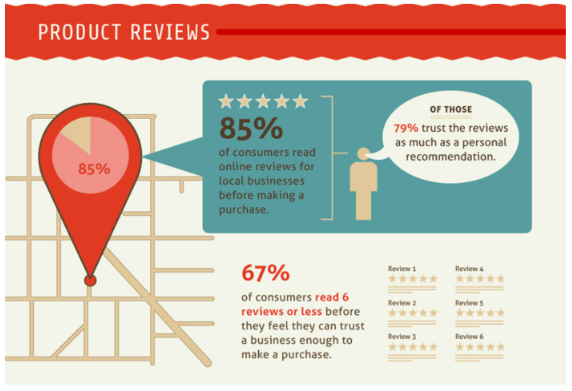
I want to let you in on a little secret: ecommerce (and commerce in general, for that matter) is psychology.
Whether you slacked off in your freshman 101 course or not, you’re using decades of psychological research, findings and theories every time you sit down to tweak your ecommerce website, name a new product and send out marketing emails — even if you don’t realize it.
From 1960s magazine ads and high-ticket Super Bowl TV spots to content marketing and the buyer’s journey, modern marketing tactics come straight from the realm of psychology. Tapping into proven psychological conclusions about human thought and behavior taught us how to successfully market and sell to people.
It’s important that you’re implementing that knowledge to help make your ecommerce website as successful as it can be. Let’s talk about the psychology principles at work in the ecommerce world and how to use them to your advantage.
The Behavior Change Model: What motivates customers to buy?
One of the most important gifts psychology has given marketers is an understanding of what motivates customers. What gets customers to buy, to buy now and to buy from you?
Psychologist Dr. BJ Fogg’s Behavior Change Model sheds some light on those questions. According to Dr. Fogg, human behavior relies on three basic elements:
- Motivation
- Ability
- Triggers
Motivation falls into one of three categories: sensation, anticipation or social belonging. What does that mean? It means consumers are motivated to buy things based on the promise of pleasure, avoidance of pain, a sense of hope or fear or the promise of social acceptance. These are the motivators we draw upon when advertising or marketing our products.
Motivation is great, but if a consumers isn’t able to buy your product, they can’t become a customer. Ability can refer to financial ability, knowledge or time required to purchase or use your product.
Taking your target customers’ various levels of ability into account is the difference between making a sale and watching your ads fall on deaf ears.
I may be motivated to gain social acceptance by buying a BMW, but my bank account limits my ability. That’s why I drive a Chevy. It’s also why I don’t see many BMW ads online. Taking your target customers’ various levels of ability into account is the difference between making a sale and watching your ads fall on deaf ears.
Since motivation is typically an ongoing state (when it comes to ecommerce), the third element is a trigger—something that prompts the consumer to take action, right now, and buy. Most of what we think of as advertising (calls-to-action, Facebook ads, website pop-ups) are designed to trigger consumers to buy.
When the three elements of motivation, ability and triggers line up, (ping!) you just scored a new customer.
Trends in Customer Behavior: Psychology in Action
If your eyes glazed over as soon as you read “theory,” you aren’t alone. Without digging deeply into the academic side of psychological theory, there’s a lot we can learn based on observation and statistical findings specifically targeted to discover trends in consumer behavior. After all, theorizing is only as useful as it is proven in the ecommerce industry.
So what consumer psychology habits do you need to understand in order to build a successful ecommerce shop?
- 57% of consumers will abandon a site that doesn’t load within three seconds. And 80% of those people will never come back.
- 92.6% of people say visuals and imagery are the #1 factor that influences their purchasing decisions.
- 85% of consumers read online reviews about local business before making a buying decision. 79% of those people trust online reviews just as much as a personal recommendation from a friend.
- 41% of ecommerce cart abandonment is caused by unexpected charges during checkout, 29% by having to register before buying, 11% by unclear delivery information, and 10% by lengthy checkout processes.
- More than 80% of consumers feel more secure making a purchase when trustworthy card logos are displayed on the payment page.
Using Psychology to Your Advantage: Building Your Ecommerce Website for Conversion
Now that you have a better understanding of underlying psychological principles and how they apply to consumer behavior and ecommerce shopping, let’s talk about how to leverage that knowledge.
Even the most basic elements of your website design can have an outsized impact on how customers perceive your store and how willing they are to buy from you.
Website Design
Even the most basic elements of your website design can have an outsized impact on how customers perceive your store and how willing they are to buy from you. That’s why you should consider consumer psychology when deciding on your store’s primary design — from color choice to visuals to loading speed.
-
Visuals: An overwhelming majority of purchasing decisions are impacted by visuals. This is even more vital in the ecommerce world because images are really the only way customers can get a feel for the product before buying. Use plenty of well-lit, high-quality images, from varying angles, to put customers’ minds at ease about purchasing your products.
-
Color: Rethink your use of color on your ecommerce site. What do your brand’s colors say to customers? How do you call attention to CTAs and other important information? Does color add to your conversion or distract consumers?
-
Speed: Above almost everything else, your store needs to load in under three seconds. If you use Volusion, you’re already in good shape here. If not, be sure to use optimized image files, limit the number of elements on each page, and invest in the very best hosting.
Social Proof

Source: Powered By Search
Remember that social acceptance is one of the three primary motivations for consumer behavior. Use that to your advantage by sprinkling in social proof throughout your store. Include customer reviews and ratings for each product, and incentivize customers to share their feedback. Wherever it makes sense, include third party validation or awards your products or brand has received.
Reducing Friction
Be it slow website loading time or a clunky checkout process, friction includes anything at all that gets in between a customer who wants to buy from you and the sale. Friction causes shopping cart abandonment and low conversion rates, so your ecommerce website should eliminate as much friction as possible.
- Streamline checkout. Your checkout process should be as quick and simple as can be. Cut out any unnecessary steps and ensure the whole process is transparent and easy.
- Be clear about added costs. One of consumers’ biggest pet peeves is getting all the way through the checkout process, only to discover that shipping is an extra $25. Be cler and transparent — from the very beginning — about shipping and other costs that add to the order total.
- Offer secure payment. Consumers are (rightfully) wary about handing out their sensitive payment information. Be sure to offer secure payment options that consumers trust (like Paypal or Square) and prominently display those badges.
Psych 101 Meets Ecommerce Shopping
Far from your college days of Psych 101, you don’t need to worry about passing any finals—but a firm understand of the psychology of consumer behavior and how it plays out in the ecommerce world is essential to your store’s success. Now that you have the basics down, it’s time to make them work for you.
Have any questions about the psychology of ecommerce shopping? Let us know in the comments!











